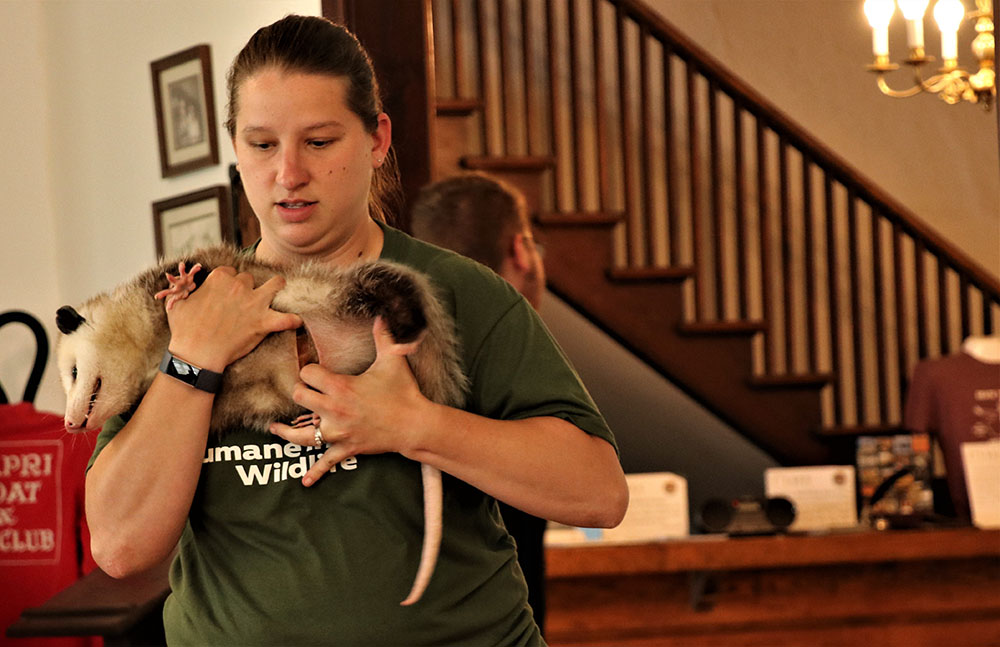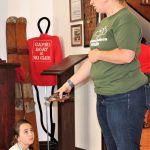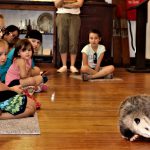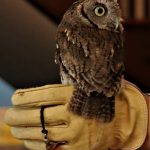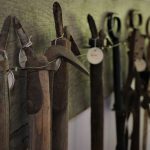By Stephanie Fox
Medill Reports
Sitting cross legged on the floor, a group of children smiled excitedly as a small creature walked up to each of their feet, wiggled its nose and moved on. The children’s hands fidgeted in their laps, itching for a chance to touch an animal that most people are terrified to even look at.
“Can I pet her?” one of the smaller girls asked as the creature waddled out of the semi-circle the children had formed.

“No. We’re not going to pet her,” said Nicole Harmon, who has the title of “humane educator” at the Moraine Ridge Wildlife Rehabilitation Center in Valparaiso, Indiana. The center falls under a parent organization called Humane Indiana which initially only took in domestic animals until July of 2014 when it decided to expand to accommodate the large number of calls received about injured wildlife.
As Harmon spoke, she walked over and scooped up the wandering opossum from the floor and cradled it like a baby.
Toona (pronounced “tuna”) the opossum, was just one of four animal ambassadors Harmon brought with her to the Cedar Lake Historical Association Museum in Cedar Lake, Indiana, on May 31. She also brought a cuddle-hungry skunk named Oreo, a one-eyed Eastern screech owl named Chinah, and a painted turtle with a cracked shell who is yet to be named.
Harmon’s job as humane educator means she has two primary responsibilities. The first is identifying which non-releasable wild animals brought to Moraine Ridge Wildlife Rehabilitation Center would make good ambassadors for their species. To be chosen, these animals can’t be experiencing chronic pain from whatever injury brought them to the center. The injury can be visible, but not so gruesome that those listening to Harmon’s seminars are distracted and Harmon must be able to socialize them enough to be comfortable with her holding them in front of a group of people.
The other half of her job entails traveling all across Indiana every day to conduct hour-long talks about the work done at Moraine Ridge Wildlife Rehabilitation Center. During the 14 to 15 talks she does a week, she rotates animal ambassadors to join her on the road.
Julie Zasada, executive director of the Cedar Lake Historical Association Museum, invited Harmon to give a talk there after being introduced to the experience during a Northwest Indiana leadership class in which she enrolled. A similar presentationfor her class made her think that hosting an event at the museum would be a great way to engage her community.
“We want to be more than a history museum that [community members] can visit,” said Zasada. “We also want to be a community gathering place that they can come to repeatedly for programming. So, one of the things that we’re looking to do is include environmental education and other similar-type programs….So, in this case, we [talked] with the Humane Indiana group about the animals that are rescued in our county–in our area.”
During the museum’s free event, community members of all ages had the opportunity to learn a great deal about their local wildlife.
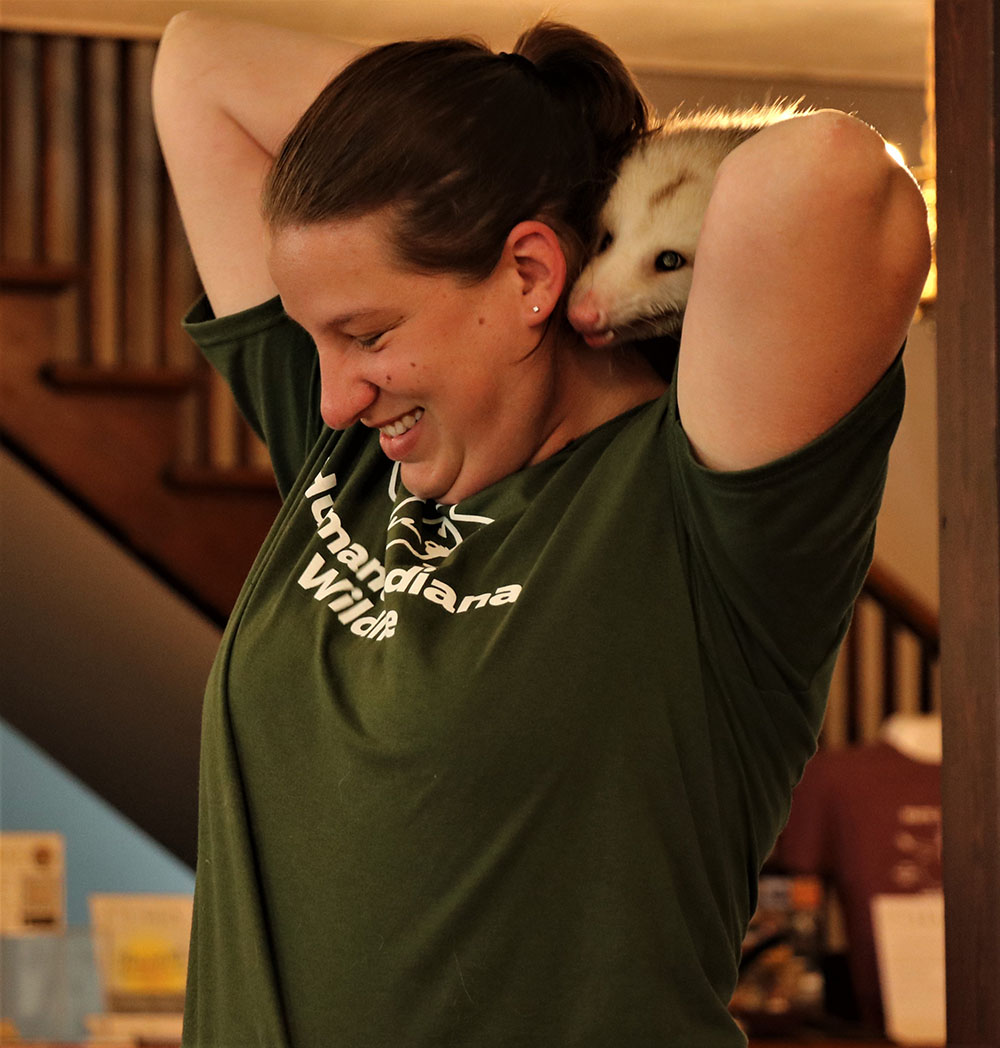
Toona taught attendees not to judge a book by its cover. Despite opossum’s bad reputation for being disease-ridden and angry creatures, they are one of the only mammals that can’t contract rabies because their body temperature of around 90 degrees is too low to carry the virus. They also can’t contract Lyme disease. And as insectivores with an insatiable hunger for ticks, this immunity comes in handy for the animals and for people! Over their 3-year lifespans, opossums can eat around 15,000 ticks–many of which carry the disease.
Opossums also don’t rely on their 50-tooth bite when they feel threatened. Instead, the animal that many people think looks like an over-sized rat opts to put on a theatrical performance. If in danger, a opossum will first “play dead.” This not only means lying motionless on its side but can also include slowing its heartbeat to just three beats a minute. If that tactic doesn’t deter a predator, the opossum will start foaming at the mouth and seizing–mimicking the very virus it physically cannot contract: rabies.
Toona arrived at the rehabilitation center after a car hit her. This is a common fate for opossums because they are nocturnal and relatively slow-moving marsupials. A marsupial is a mammal whose female members are born with a pouch on their belly to hold their babies. Rather than building a den or nest, opossum babies stay either inside their mother’s pouch or use their opposable thumbs and dexterous tail to hold onto their mother’s fur and ride her like an opossum school bus until they are fully developed and ready to fend for themselves.
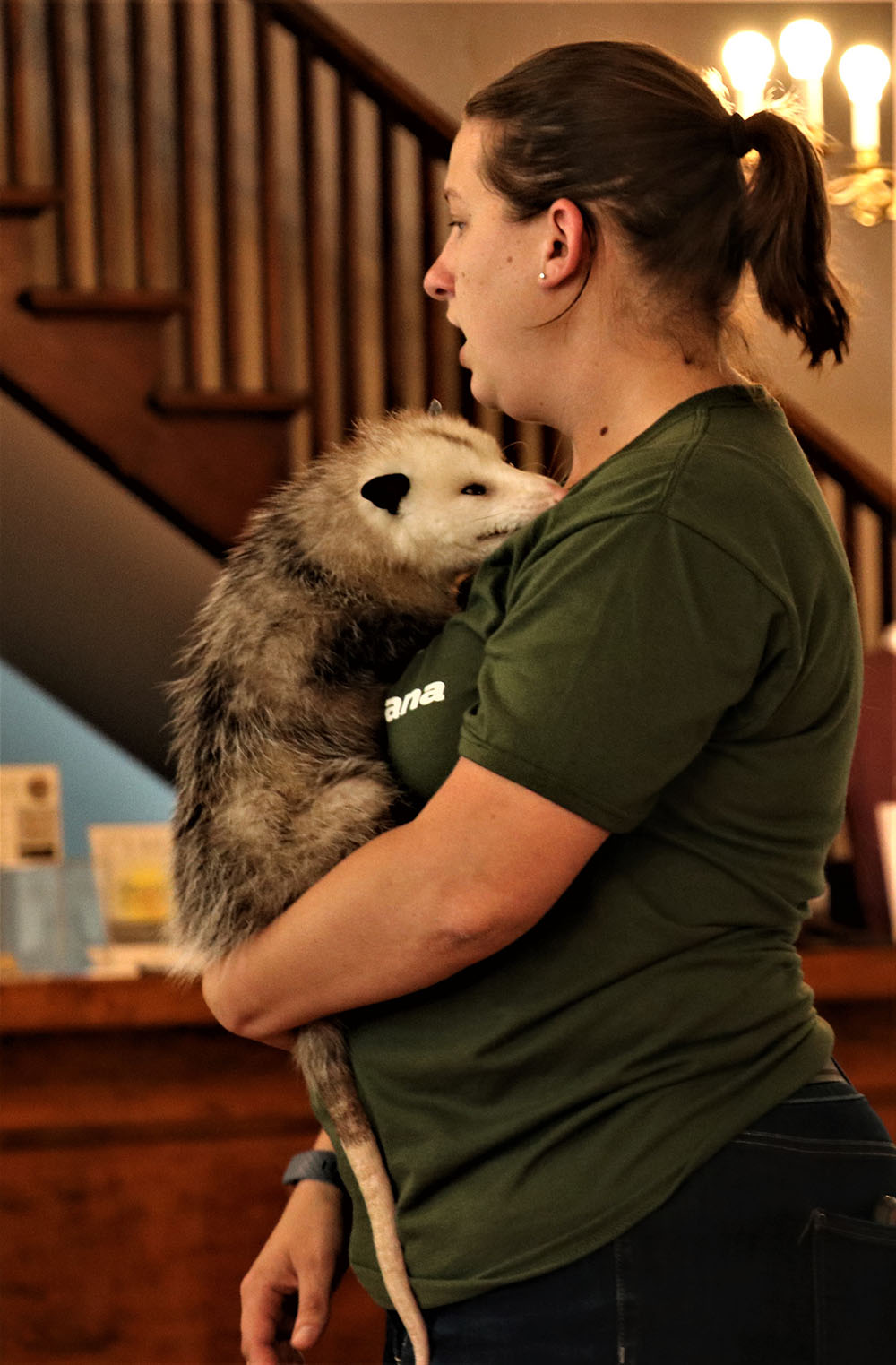
“If we have a hit-by-car female with babies, which this time of year they usually all do, that pouch is actually built to protect those babies,” explained Harmon. “What we see are opossums who come in, even if the female is badly injured [or even dead], her babies are all perfectly fine inside their pouch.”
That’s why Humane Indiana has tried to start an initiative to get drivers to pay attention to animals alive in the road and dead on the curb.
“This year we’ve been doing a big push–this sounds kind of gross–but to have people pay attention to road kill,” said Harmon. Just in 2019, four dead female opossums have been brought to Moraine Ridge Wildlife Rehabilitation Center, all with healthy and safe babies in need of help. Opossums natural inclination to eat Lyme disease-ridden ticks, is the backbone of this initiative.

Oreo, a skunk initially born into the pet trade, was happily living with a family of humans until his natural instincts made him a terrible house pet.
“It was the time of year where [his owner’s] got ants in their house,” said Harmon. Like opossums, skunks are nocturnal insectivores who use their sense of smell and hearing to find insects to eat. “Oreo could smell the ants behind the wall. And he knew that whatever was back there smelled amazing. He could hear them moving around inside the wall. Whatever it was, he had to have them. So, Oreo used his claws, which he has and are meant for digging, to dig through the drywall of the house, all the way down to where the wires were to eat the ants. But it didn’t stop there because the ants weren’t just in the wall. The ants were under the carpet as well. So, he pulled up all of their carpet.”
As Harmon spoke, Oreo snuggled into her chest. His domestic upbringing made him arguably too friendly with humans. When Harmon placed Oreo back into his crate he “threw a tantrum” and stomped his feet, which turns out is also a behavior skunks do in the wild when they are angry or feel threatened.

“If we’re walking down a trail and a skunk is in the area, they’re going to do a couple of different behaviors to let us know they’re unhappy,” Harmon said. “When they’re upset about something, skunks actually stomp their feet. They’ll slam their front two feet onto the ground. That conveys the message that whatever we’re doing is something that the skunks are not happy about. If you don’t listen to the stomping,” she said.
“The next thing he’s going to do is charge at you. It’s a bluff charge. He’s trying to make himself look a lot scarier. Sometimes it works. Sometimes it doesn’t. If it doesn’t work, the next thing they’re going to do is raise their tail…That tail is serving as a flag: ‘Hey. I have something here. Don’t make me use this defense. It’s serious business.’ And if you still don’t listen, then you run the risk of being sprayed.”
Like Toona, Chinah and the painted turtle were also hit by cars. These accidents caused the Eastern screech owl to lose an eye and the turtle to crack its shell to the point where Harmon had to puzzle-piece it back together.

Each time Harmon removed an animal from its crate the children’s eyes widened, and the parents whipped out their phones to snap pictures of animals that could be living in their neighborhoods or as close as their backyards.
Once the presentation ended, attendees had the opportunity to roam the halls of the 100-year-old museum. Rooms filled with ancient medical equipment, floral hats and farming tools filled the space that at one point was a luxurious hotel on the lake.
The museum is open from May through September to anyone interested in learning about the history and community of Cedar Lake. Museum events are constantly changing, so it may be awhile before Humane Indiana makes another appearance at the lakefront building. But even if guests can only visit during the usual hours of operation, they are sure to learn something new and have a unique experience.

